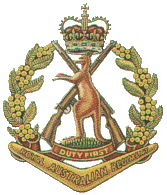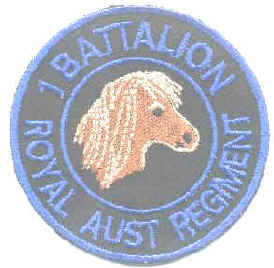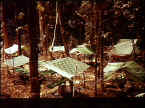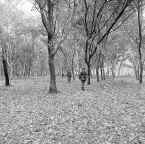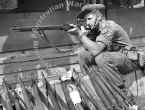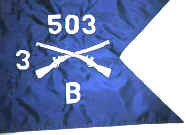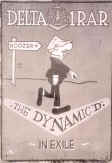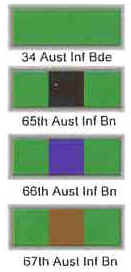 |
|
|
Now operates as the Ready Reaction Battalion |
|
|
Tours of duty overseas. |
|
| Japan | As part of British Commonwealth Occupation Force (BCOF), 1946 1948 |
| Korea | 2 tours during the Korean War, 1952/53, 1954/56 |
| Malaya | During the Emergency, 1959/61 |
| Viet Nam | 2 tours; 1 with US 173rd Airborne; 1 with 1 ATF, 1965/66, 1968/69 |
| Malaysia | With 28 Commonwealth Infantry Brigade, 1969 |
| Singapore | As part of ANZUK, 1970 |
| Fiji | Operation Morris Dance to evacuate Australian civilians, 1987 |
| Somalia | Operation Restore Hope, 1992/93 |
| East Timor | |
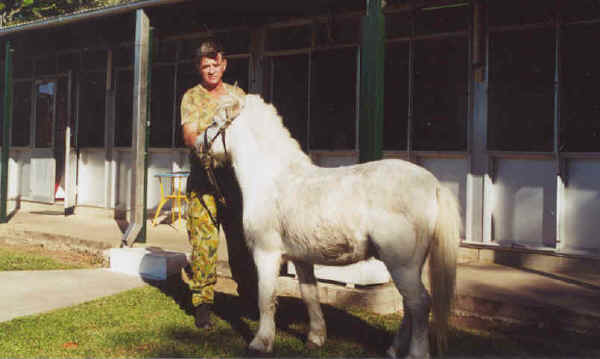 |
| The Battalion Mascot, Septimus the Shetland Stallion and his handler Cpl Peacock |
|
1st Battalion Royal Australian Regiment in Korea |
| In 1945 Australia sent three
units to Japan as part of the British Commonwealth Occupation Force
(BCOF). Originally known as the 65th, 66th and 67th Infantry Battalions,
they were raised from Australian divisions stationed in New Guinea at the
end of the Second World War. On 23 November 1948, the battalions were
renamed the First, Second and Third Battalions, The Australian Regiment,
respectively. The prefix “Royal” was granted by King George VI on 31
March 1949.
1RAR was in Australia when the Korean War began in 1950, having returned from Japan at the end of 1948. The battalion was bought to strength with volunteers from 2RAR and new enlistments resulting from the “K Force” recruitment campaign. It trained in Australia at Puckapunyal, Victoria, before departing for Korea on the troopship Devonshire on 3 March 1952. It arrived in South Korea on 6 April, joining the 28th Brigade on 1 June. 1RAR was not involved in any of the major battles of the Korean War, but did participate in many lesser known, but just as dangerous, patrolling operations. In July of 1952 it was detached to the 29th Brigade, relieving other battalions on Hills 159, 210 and 355. It took part in general patrolling along the Jamestown line, which involved securing defences, repairing minefield fences, and undertaking reconnaissance of enemy positions to gather information on them. Other major operations that 1RAR took part in usually aimed at capturing a prisoner or destroying enemy defences. Operation Blaze (2 July) was 1RAR’s first major action. It involved a raid on Hill 227 to capture a prisoner. Although it failed in its objective, the operation did give the brigade important experience against a strong enemy. On the night of 13–14 September a fighting patrol from 1RAR encountered the enemy, and it captured its first prisoner. In early December 1RAR took over defences on Hill 355. The position had been poorly maintained and it took 1RAR ten days and 50 casualties to secure the area and regain control of the approaches. The battalion also supported the Royal Fusiliers in Operation Beat Up (25–26 November) by launching a diversionary attack on Hill 227. The last action 1RAR engaged in during the war was Operation Fauna (11–12 December). The purpose of the operation was to capture a prisoner and destroy enemy defences. It did not achieve its main objective, but did succeed in destroying the enemy position code-named Flora. Nearly a third of the force became casualties, with 22 wounded and three missing. Operation Fauna shows the risks associated with prisoner-capturing operations, as they were rarely successful and often resulted in heavy casualties. On 21 March 1953, 1RAR was relieved by 2RAR at Camp Casey, near Tongduchon, and returned to Australia later that month. The battalion returned to Korea in April of 1954, and was involved in training and border patrols. In March 1956, 1RAR ceased its operations in Korea and returned to Australia. Text by AWM
|
|
1st Battalion Royal Australian Regiment in the Malayan Emergency |
| In 1945 Australia sent
three units to Japan as part of the British Commonwealth Occupation
Force (BCOF). Originally known as the 65th, 66th and 67th Infantry
Battalions, they were raised from Australian divisions stationed in New
Guinea at the end of the Second World War. On 23 November 1948, the
battalions were renamed the First, Second and Third Battalion, The
Australian Regiment, respectively. The prefix “Royal” was granted by
King George VI on 31 March 1949.
The Australian battalions sent to the Malayan Emergency formed part of the 28th Commonwealth Infantry Brigade Group (CIBG). CIBG was part of the British Commonwealth Far East Strategic Reserve (FESR). FESR comprised British, Australian, New Zealand, and Malayan troops. Australian officers commanded the Australian battalions in Malaya. However, the operations that 1RAR carried out were part of a larger strategy that required cooperation from the FESR and the Malayan army. Efforts were directed against the Communist terrorists. 1RAR arrived in Singapore on 2 October 1959. It began operations in Malaya on 9 November after spending a month training and acclimatising. The battalion was stationed at Minden Barracks, located in the foothills on the eastern side of the island. Although Minden was the nominal home of the battalion while it was in Malaya, it rarely spent any length of time there. Operations could last for days or weeks at a time, and breaks between operations were brief. During its period of service in Malaya, the battalion operated with three rifle companies, instead of the usual four. The first operation 1RAR took part in was Operation Bamboo, which began on 9 November. Bamboo was a deep jungle search in Upper Perak on the Thai–Malay border. 1RAR remained in the jungles of the border area for 18 months, working to eliminate small groups of terrorists. It was monotonous and frustrating work. It was not uncommon for rain to wipe out tracks that were being followed, or for the terrorists to cross over the border into Thailand, where they could not be followed. Operation Magnet began in April 1960. This operation was the first time that FESR units were able to track the terrorists across the Thai border. They then attempted to drive the terrorists into Malaya, where units from the 28th Brigade were waiting in ambush. Unfortunately, the operation did not result in any engagements. Operation Jackforce began in June. It used the same approach that was employed during Magnet, except this time the 28th Brigade crossed the border while the Malayan units waited in ambush. This resulted in one contact with the terrorists. On 31 July 1960, the Malayan Prime Minister Tunka Abdul Rahman signed a proclamation declaring that the emergency was over. Although this was the formal end of the Emergency, 1RAR continued on operations in Malaya until the end of its tour of duty in October 1961. It departed for Australia on 29 October, 1961. Text by AWM. Casualties 2 killed in action, no wounded figures available Decorations 1 MBE |
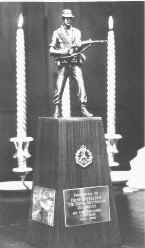 |
<<
Presented to the Battalion by the Officers, Viet Nam 1965
Unofficial, commercially produced patch for the "Pony Soldiers" >>> |
|
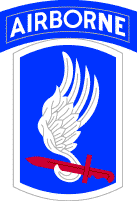 |
1R.A.R.
joined the US unit, 173rd
Airborne Brigade (the "Herd")
in May/June of 1965 in SVN when the two line Battalions of the Brigade
were the 1/503rd and 2/503rd. When 1RAR joined up, they became the third
battalion of the Brigade and remained so till they left to go home to
Australia.
When they were replaced, the leadership in the U.S. saw that the Brigade's third Battalion (1RAR ) had left and so replaced them with the 4/503rd. So for a long time there was no 3/503rd. This was later rectified.
Guidon of B Coy 3rd Bn 503rd Infantry |
| The bayonet is used to refer to the brigade and being borne by the wing alludes to the brigade's airborne status. Red, white and blue are the USA national colours |
|
BRIEF HISTORY (1945 to 1994)
Lieutenant Colonel R. H. Marson, DSO, assumed command of the Battalion which commenced immediate preparations for redeployment to
Moratai, where 34th Infantry Brigade was being concentrated. Every member of the unit was a volunteer for service in Japan where the Battalion served from February 1946 until its return to Australia in December 1948. Throughout this time the Battalion has been actively involved in major exercises throughout Australia, overseas military exchanges and has on occasions provided much needed assistance to the North Queensland community in times of emergencies such as natural disasters. The Battalion continues to develop the skills and techniques to fulfil its present role as part of the Operational Deployment Force of the Australian Defence Force. |
